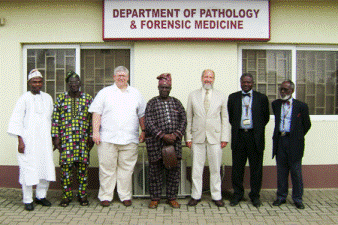Natural Resources, School of

Karl Reinhard Publications
Document Type
Manuscript
Date of this Version
2024
Citation
Manuscript, 2024
Abstract
This report focuses only on dietary results from the Aztec Ruins and Salmon Ruins coprolites. The parasitological analysis was completed in 2018 and was the focus of several papers that were summarized by Camacho and Reinhard (2020). This did not include DNA analysis. The coprolites from these sites are not appropriate sources of DNA testing.
The main conclusion of the analysis are:
1) Two very distinct plant spectra are represented in Aztec Ruins West (ARW) room 219 and room 225.
2) The three contexts of ARW room 219 show interesting variation in food selection, however these are small samples.
3) Two older analyses of Salmon Ruins room 62W compared with sites other than ARW show that this sample is distinct from other sites regarding food diversity.
4) In this analysis, ARW room 225 is more similar to Salmon Ruins room 62W than ARW room 219.
5) ARW room 219 has unparalleled evidence of squash, bean leaf and groundcherry consumption.
6) Maize mushrooms from the fungus Ustilago maydis, is a common food at ARW but absent at Salmon Ruins.
7) Based on previous analysis, Salmon Ruins exhibits the highest prevalence of maize starch found independent of other maize micro- and macro-fossils.
8) Salmon Ruins room 62W was used during times of regional gatherings as indicated by depth and quantity of coprolites which is unprecedented in the Ancestral Pueblo area.
Included in
Archaeological Anthropology Commons, Ecology and Evolutionary Biology Commons, Environmental Public Health Commons, International and Community Nutrition Commons, Parasitology Commons


Comments
Copyright 2024, Karl Reinhard. Used by permission